How I Came To Call Cozumel Home: Not My Story: Ruth Schrage
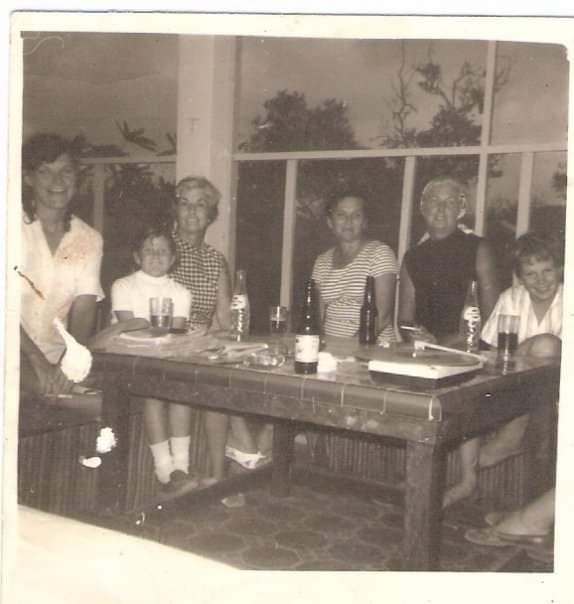
Not My Story: Ruth Schrage
This is not my story to tell, but I’m one of the few people left who still can. Also, I’m not entirely sure what is real and what is fiction: I never knew or maybe I forgot. So I’ll give you a series of shifting perspectives, hearsay, gossip, 50 year-old childish memories, and eventually what I choose to believe.
What I will tell you is about a gutsy, determined, courageous, hardworking and pretty damn amazing woman who came to call Cozumel home: Ruth Schrage, my mother.
I might as well start with the facts. My mom and her friend Ellyn visited Cozumel in late January, 1967. The date is clear because we were on the island for the great Chicago blizzard, the one that shut O’Hare down, on January 26 and 27 that year. Ellyn had her two kids in tow, and my mom only brought me thinking that my two younger siblings would not be up to the trip. Or perhaps there was not enough money for all. Or some other reason altogether.
It was a warm, laid-back, quiet place. We stayed at Hotel Lopez, and even called Don Miguel, Papa Lopez. We ate at Pepe’s Café, which belonged to Don Eduardo Ruiz (Pepe Becerra’s father-in-law – Palmeras is at that site now). For a rural Michigan housewife and her kid, it was paradise. With a massive blizzard back home, we had warm, clear, blue water. We swam at San Francisco beach – only reachable by boat – and ate conch. As a kid, it was a dream come true, and it must have been for my mom and Ellyn also since we moved there a few months later. By this point, my parents were divorced which is a whole other story that is not mine and will remain untold here.
On September 16, 1967, hurricane Beulah hit Cozumel leaving palm trees bowed down with her power. We arrived almost 3 weeks later on October 5. My eight year-old self saw the differences: the bald trees, damaged houses, and the clean up that was still in progress. My mom assured me that no one had died, but as a kid who was terrified of tornadoes, I was not sure I believed her. Again we stayed with Miguel Lopez, but this time we rented a stand alone unit on the 5a Avenida, around the corner from the hotel. We moved three times. For a short time, we lived in a house on the Rafael Melgar, then in Pedro Gual’s house behind the primaria Vicente Guerrero, and we finally settled in Carlos Namur’s house on the Calle 6 Norte, half a block from the ocean (it is a used as a warehouse now and belongs to Pancho Morales, I believe).
Ellyn left a little while after we arrived, and eventually went back to get her kids. Yes, you read that right. My mom was in a country that was still foreign at the time and did not speak Spanish, but she was raising an extra two kids. I did say she was strong, right?
*
She was also a raconteur, and the stories she told changed constantly. She was skilled enough at it that once she told a group of bored archeologists an “authentic Mayan legend”, made up on the spot, and believable enough that they actually published it and sent her a copy of the article. We laughed at that one for a long time!
So, why did she stay?
She obviously wanted to. She sold her half of the house in Michigan to my dad for a pittance and invested it in rental motor scooters with Miguel Angel Alcantara, aka el Diablo, until he sold the bikes to take a great trip to Spain. Over the next 22 years, she baked chocolate cakes that many old-timers still remember, catered for parties and events, and worked at Maya Cozumel, Condumel, La Ceiba, and I think it was Hotel Colonial – I was in Pennsylvania by her last job. She only left the island to move in with me in 1989 to get treatment for lung cancer, and at the urging of Alberto Euan, her best friend. She was too sick to live by herself anymore.
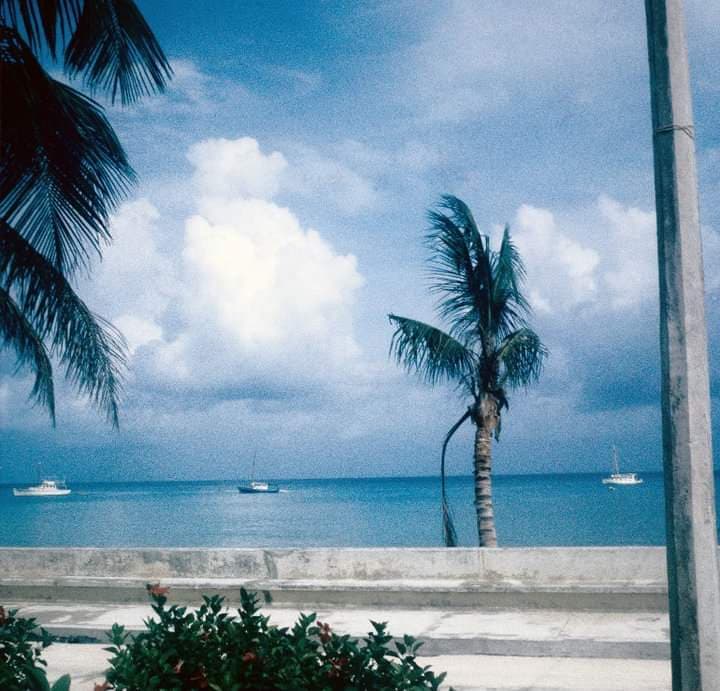
Cozumel became both foreign and home, an exhilarating mix of common sense and wild improbable events, magical realism come to life. We shape our lives and give them meaning by telling stories, and in the end, that is all this is left of us.
Sometimes I think my mom was afraid she was not enough for some of the wealthy and sophisticated people who frequented Cozumel. With only a high school diploma, she loved it when people assumed she went to a good college. She was well-read, very intelligent, and adventurous, and her stories would both bolster her up and protect her from people who wanted too much. They became her walls, raised or lowered at will.
I would listen to my mom’s reasons to stay in Cozumel when she spoke to the small expat community and a few select others at the time. The most common one involved drugs. She would speak of the horror of drugs…in the tiny, rural Michigan village where we lived. Drugs were a growing problem in the cities, but we did not have the rural meth epidemic we have now in the US. Even as a kid, I knew it was the quick, convenient, go-to story that would deflect other deeper questions. Before you ask, there was some pot on the island. Not much, but some…it was the era where hippies would visit, decide to camp on the beach, and be escorted to the ferry to the mainland the next day. So there was a small amount of it but nothing to be worried about. But then, where we had lived in Michigan there was no real problem either.
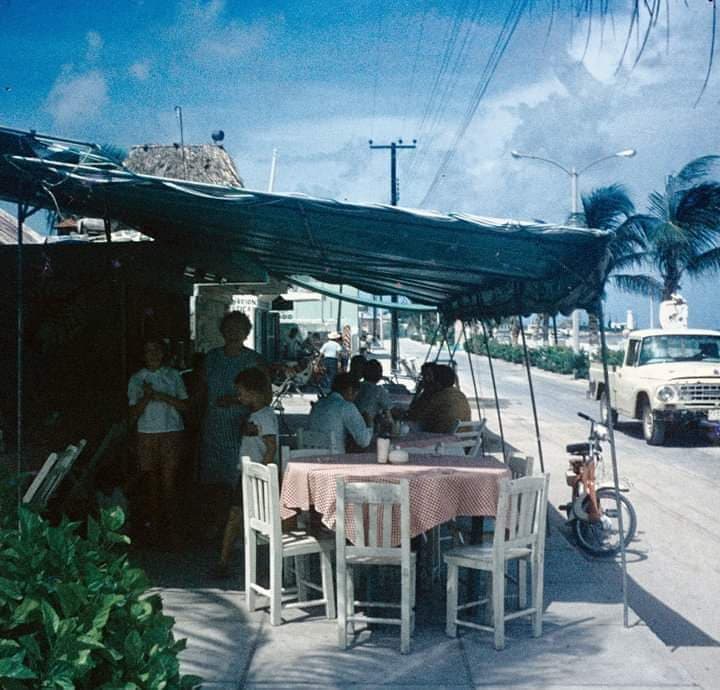
Sometimes, although she had no family on the island other than us 3 kids, my mom would talk about the great environment for families. In many ways, it was, as neighbors would watch out to be sure we didn’t get in too much trouble, we had no TV, and lots of kids to play with. It would be quite fair to say we were informally adopted by many of the extended families in town. Streets were safe, rife as they were with bicycles. There were fewer than 40 taxis, a few private cars that were brought over by boat from Puerto Morelos…nothing like now. It was a real adventure to go to the pier to see the sole car being removed from a ferry that was not set up to transport them, always wondering if it would fall into the sea. Some of the volquetes (dump trucks) that we had still had to be cranked up with a lever! We would play ball on the streets, play chicken with cars, and be totally safe.
Someone – I can’t recall who – said that my mom and Ellyn were going to start up a call girl business. That was so far from the realm of reality, I don’t even consider it. But I did say I would mention gossip! Pueblo chico, infierno grande. I can’t see it and those of you who knew my mom, would vouch that she wouldn’t be involved in something like that. Some gossip is not worth exploring.
Other stories would involve Ellyn being an amateur anthropologist, with an interest in the local Maya. Of course, Ellyn left and my mom stayed. Sometimes she would mention that she was stranded with the five kids and was concerned about traveling to the US with children who were not hers. Her reasons changed depending on her mood and the audience.
Our house became the hub for the expat community. Harriet Wilkins, the widow of a physician who had just finished building their island home when he passed, became her best friend. Others who would show up were: Juanita Blakemoor, who had been coming for years, bringing Christmas gifts for kids and who owned a picture with an alux. Joyce Gonzalez, who married Ramon Gonzalez and had a child, Felix. Irene and Howard Atkins, whose book-filled home I loved. I don’t recall everyone’s surname: Audrey, Bob and Frank (always mentioned as a unit), Jeanette, Catherine were there at different times. Bob McBride, a TWA flight attendant, would bring a turkey and fixings so my mom could have proper Thanksgivings with tons of people. She loved hosting parties, and having people in and out of her house all the time. That was easily another reason she fell in love with Cozumel – it was very far removed from the 76 acres in the middle of nowhere in Michigan.
*
I remember my mom being old in Michigan. She wore housecoats, did the whole housewife thing changing the decorations for every minor holiday, rarely entertained, visited her parents and in-laws. As a divorced woman, that would have all changed. She would likely have lived in my grandfather’s small upstairs apartment – a recipe for disaster considering how strong-willed and similar they were. With no daycare, two elementary school kids and a three year-old, my fiercely independent mom would have had to rely on my grandparents. Even after the Civil Rights Act, jobs were scarcer for women and they paid less. Divorcees were considered fair game. I think she saw a very bleak horizon in Michigan in 1967.
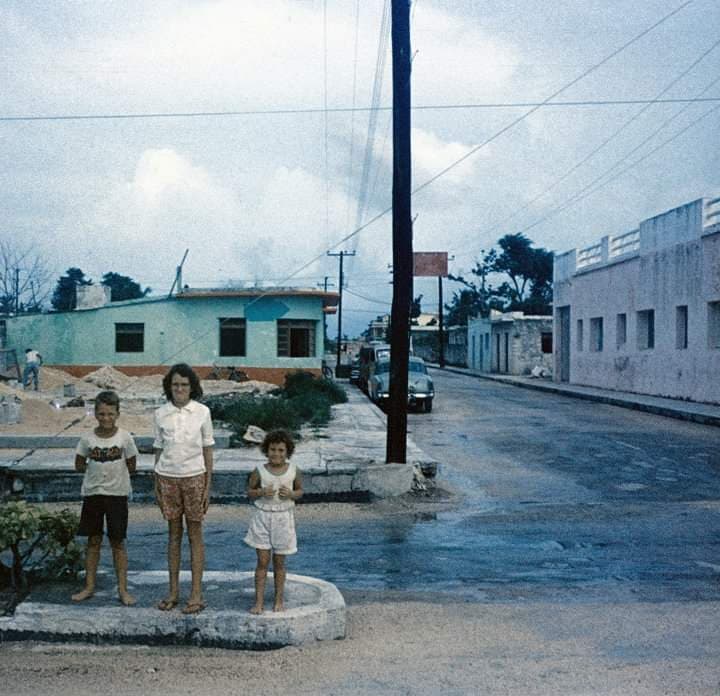
That changed on the island. She seemed younger and more vibrant. Although she was accepted quickly she was somewhat of an outsider, so she could set some of her own rules. She would watch the sunset by the seawall and go to dances, wear shorts year-round, clean house naked, host potlucks and Thanksgiving parties, take nighttime walks when she couldn’t sleep, hang out with friends. The prison of expectations she lived in had been released. Suddenly, decisions were hers to make; she could change, grow, and enjoy her life. The horizon she chose had blue waters blending into the sky, and many more possibilities.
Kelliann Schrage Flores is a semi-free spirit, old soul, shape-shifter, wanderer, trapped on Long Island, not Mexican, not Unitedstated, Cozumelena de Corazon, chief herder of over 30,000 wet cats at Chismes, Noticias y Cultura de Cozumel. Spanish teacher without a home college, chimera unicorn lover, eternal optimist, always remembers the feel of old warm sand, hot pavement, and blisters on her bare feet. Learned to swim at San Francisco Beach and to kiss somewhere undisclosed on the island. Heat instead of cold, tea not coffee, and always laughter.
Cómo es que Cozumel se convirtió en mi hogar. No es mi historia; Ruth Schrage.

Esta no es mi historia para contar, pero soy una de las pocas personas que aún puede hacerlo. Además, no estoy completamente segura de lo que es real y de lo que es ficción: nunca lo supe, o quizá lo olvidé. Por ello, les daré una serie de perspectivas distintas, rumores, chismes, recuerdos infantiles desde hacec 50 años, y, al final, lo que he elegido creer como cierto.
Les platicaré acerca de una mujer audaz, determinada, valiente, trabajadora y sumamente asombrosa que hizo de Cozumel su hogar. Me refiero a Ruth Schrage, mi madre.
Bien puedo comenzar por los hechos. Mi mamá y su amiga Ellyn visitaron Cozumel a fines de Enero de 1967. La fecha la recuerdo con claridad pues fue el año de la gran tormenta de nieve en Chicago; la que en Enero 26 y 27 de ese año cerró el aeropuerto O’Hare por completo. Ellyn vino con sus dos hijos a cuestas en tanto que mi madre sólo me trajo a mi, pensando que mis dos hermanos pequeños no estarían dispuestos a realizar el viaje. O, posiblemente no había suficiente dinero para todos. O, quizás hubo una razón completamente distinta.

Era un lugar cálido, relajado, tranquilo. Nos hospedamos en el hotel López e incluso a Don Miguel lo llamamos Papá López. Comíamos en Pepe’s Café propiedad de Don Eduardo Ruiz (suegro de Pepe Becerra y donde hoy día se ubica Palmeras). Para una ama de casa y una pequeña provenientes de la zona rural de Michigan, era el paraíso. En tanto en casa había una enorme tormenta de nieve, nosotros teníamos agua cálida, transparente y azul. Nadábamos en playa San Francisco a la cual sólo se podría llegar en lancha, y comimos caracol. Como niña, era un sueño vuelto realidad y es posible que también lo fuera para mi madre y para Ellyn ya que a los pocos meses se mudaron ahí. Para ese entonces mis padres se habían divorciado, lo que es totalmente otra historia que no es mía y que aquí quedará sin contarse.
El 16 de septiembre de 1967 el huracán Beulah impactó Cozumel haciendo que las palmeras se doblaran ante su fuerza. Llegamos el 5 de octubre, casi 3 semanas después. Mi personita de ocho años se percató de las diferencias: los árboles pelones, casas dañadas y la limpieza continuaba. Mi madre me aseguró que nadie había muerto, pero como niña a quien los tornados le aterrorizaban, no sabía si creerle. De nuevo nos hospedamos con Miguel López, y en esta ocasión rentamos una casa independiente sobre la 5ª. Avenida, a la vuelta del hotel. Nos mudamos en tres ocasiones. Durante un lapso muy breve, vivimos en una casa sobre la Rafael Melgar; después en la casa de Pedro Gual detrás de la primaria Vicente Guerrero y finalmente nos instalamos en la casa de Carlos Namur sobre la Calle 6 Norte, a media cuadra del mar (en la actualidad creo que se usa como bodega y que pertenece a Pancho Morales).
Ellyn se fue al poco tiempo de que llegamos, y eventualmente regresó por sus hijos. Sí, leyeron bien. En ese momento, mi mamá se encontraba en un país extraño, sin hablar español, y además criando a otros dos chicos. Dije que ella era fuerte, ¿cierto? *
También era una cuentista, y las historias que platicaba cambiaban con frecuencia. Era tan hábil que en una ocasión contó a unos arqueólogos una “autentica leyenda maya” que inventó al momento, y la historia fue tan verosímil que de hecho se publicó y le enviaron una copia del artículo. ¡Durante mucho tiempo nos reímos de esta anécdota!
Entonces, ¿por qué se quedó? Era obvio que eso es lo que ella quería hacer. Vendió a mi papá la mitad de la casa en Michigan por una bicoca e invirtió el dinero en motocicletas para rentar con Miguel Ángel Alcántara, también conocido como el Diablo, hasta que él vendió las motos para hacer un grandioso viaje a España. Durante los siguientes 22 años se dedicó a preparar pasteles de chocolate que muchos de los viejos habitantes aún recuerdan; daba servicio de alimentos para fiestas y eventos, y trabajó en Maya Cozumel, Condumel, La Ceiba y creo que el Hotel Colonial. Yo estaba en Pennsylvania durante su último trabajo. Sólo salió de la Isla en 1989, mudándose conmigo para su tratamiento de cáncer de pulmón y a insistencia de Alberto Euan, su mejor amigo. Ella ya estaba muy enferma para continuar viviendo sola. *
Cozumel fue tanto un sitio extraño como un hogar; una excitante mezcla de sentido común y de disparatados e improbables acontecimientos, el realismo mágico que cobró vida. Damos forma a nuestras vidas y las definimos a través de contar anécdotas; y, al final, eso es todo lo que queda de nosotros.
En ocasiones creo que mi madre tenia no ser lo suficiente para algunas de las personas acaudaladas y sofisticadas que frecuentaban Cozumel. Con solo el diploma de preparatoria, le encantaba que la gente diera por hecho que ella había asistido a una buena universidad. Era muy culta, inteligente y aventurada; y sus historias la alentaban al igual que la protegían de gente que pedía demasiado de ella. Éstas se convirtieron en sus muros, los cuales levantaba o reducía a voluntad.
Solía escuchar las razones que mi mamá daba a la pequeña comunidad de expatriados y a poca gente selecta, explicando por qué decidió quedarse en Cozumel. La razón más común implicaba drogas. Hablaba del horror de las drogas en el pueblo pequeñito de Michigan donde solíamos vivir. Las drogas eran un problema creciente en las ciudades, pero no teníamos la plaga rural de metanfetaminas que existe ahora en los E.U.A. Incluso como niña, sabía que era la historia de referencia que desviaría otras preguntas más profundas. Antes de que pregunten, había algo de hierba en la Isla. No mucha, pero algo… era la época que llegaban los hippies de visita, acampando en la playa y eran escoltados hacia el ferry para que salieran a tierra firme al día siguiente. Así que sí había una pequeña cantidad, pero nada de que preocuparse. Y también en ese entonces, donde habíamos vivido en Michigan, en realidad tampoco era un verdadero problema.

En ocasiones, aunque ella no tenía familia en la Isla aparte de nosotros 3 pequeños, mi madre solía hablar del gran ambiente que era para las familias. En muchos sentidos, entonces, los vecinos vigilaban que no nos metiéramos en problemas; no teníamos televisión y sí muchos niños con quienes jugar. Es bastante justo decir que fuimos adoptados de manera informal por muchas de las familias extendidas en la localidad. Las calles eran seguras, plagadas de bicicletas. Habían menos de 40 taxis, algunos automóviles particulares que fueron traídos por barco desde Puerto Morelos … muy distinto a la actualidad. Era una verdadera aventura ir al muelle para ver cómo retiraban el auto de un ferry que no estaba equipado para transportarlo; siempre preguntando si caería al mar. Algunos de los volquetes que teníamos, ¡aún era necesario ponerlos en marcha con una palanca! Jugábamos pelota en las calles, toreábamos a los automóviles y estábamos totalmente seguros.
Alguien, no recuerdo quién, mencionó que mi mamá y Ellyn iban a abrir negocio de prostitutas de lujo. Esto distaba tanto de la realidad; para mi está lejos de consideración. ¡Pero sí les dije que mencionaría chismes! Pueblo chico, infierno grande. No lo puedo imaginar; y aquellos de ustedes que conocieron a mi madre, pueden avalar que ni siquiera se hubiera visto implicada en algo similar. Hay chismes que no vale la pena ni indagarlos.
Otras historias implicarían a Ellyn como una antropóloga aficionada, interesada en los mayas locales. Claro, Ellyn se fue y mi mamá se quedó. En ocasiones decía que se había quedado varada con cinco chicos y le preocupaba viajar a los E.U.A. con niños que no eran de ella. Sus motivos cambiaban según su estado de ánimo y el público.
Nuestra casa se convirtió en el centro de la comunidad de expatriados. Harriet Wilkins, la viuda de un médico quien recién había terminado de construir su casa en la Isla cuando él falleció, se convirtió en su mejor amiga. Otros que aparecieron fueron: Juanita Blakemoor, quien estuvo viniendo durante muchos años trayendo regalos para los niños en la Navidad y quien era tenía una fotografía con un alux. Joyce González, quien se casó con Ramón González y tuvieron un hijo, Félix. Irene y Howard Atkins, cuya casa llena de libros me encantaba. No recuerdo los apellidos de todos: Audrey, Bob y Frank (siempre mencionados como una unidad); Jeanette, Catherine, quienes estuvieron presentes en distintas ocasiones. Bob McBride, sobrecargo de TWA que traía un pavo y guarniciones para que mi mamá pudiera celebrar los Días de Gracias con toneladas de personas de la manera correcta. Le encantaba hacer fiestas, y tener gente entrando y saliendo de su casa todo el tiempo. Ciertamente esa es otra de las razones por las cuales ella se enamoró de Cozumel; que distaba mucho de los 76 acres en medio de la nada en Michigan. *

Recuerdo a mi madre haciéndose vieja en Michigan. Usaba batas de casa todo el día, hacía todo lo que hace un ama de casa cambiando las decoraciones en cada pequeña festividad, en raras ocasiones, recibía visitas, visitaba a sus padres y a sus suegros. Como una mujer divorciada, todo ello cambiaría. Es muy posible que hubiera vivido en el pequeño departamento del segundo piso de casa de mi abuelo. Considerando el carácter fuerte que ambos tenían, era sin duda una receta para el desastre. Sin una guardería, con dos niños de en edad de escuela primaria y uno de tres años, mi implacable e independiente madre hubiera tenido que depender de mis abuelos. Incluso después de entrar en vigor la Ley de Derechos Civiles, los trabajos para mujeres eran escasos y pagaban mucho menos. Las divorciadas eran consideradas presas fáciles. Imagino que ella vio un futuro muy sombrío en el Michigan de 1967. Eso cambió en la Isla. Parecía ser más joven y más dinámica. Si bien fue aceptada rápidamente, de alguna manera era una fuereña, por lo que establecería algunas de reglas propias. Se sentaba a ver el atardecer en el malecón e iba a bailes; usaba shorts todo el año, limpiaba la casa desnuda, era anfitriona de cenas improvisadas y celebraciones del Día de Gracias, salía a caminar por las noches cuando no podría dormir, pasaba el tiempo con amigos. Se había liberado el encierro de expectativas en el que ella había vivido. De forma repentina las decisiones las tomaba ella; ella podía cambiar, crecer y disfrutar su vida. La perspectiva que eligió tenía aguas azules que se entremezclaban con el cielo, y muchísimas más posibilidades.
Kelliann Schrage Flores es un espiritú libre a medias, alma vieja, cambiaformas, atrapada en Long Island, sin ser mexicana ni estadounidense, cozumeleña de corazón, pastora de 30,000 gatos mojados en Chismes, Noticias y Cultura de Cozumel. Profesora de español sin universidad fija, amante de unicornios quiméricos, optimista eterna, siempre recordando arena cálida y pavimento quemante en los pies descalzos. Aprendió a nadar en la playa antigua de San Francisco y a besar en un lugar indeterminado en la isla. Calor y nunca frio, te en lugar de café, y siempre siempre risas.
______________________________
Una ex yanqui de Connecticut quien llama hogar a Cozumel desde hace más de 15 años. Laura escapó al Caribe hace años, desplazándose de una isla a otra dando clases de BUCEO. Se dedicó a perder el tiempo en Jamaica y finalmente se detuvo en Cozumel para pasar unas vacaciones de 2 semanas que aún no terminan. Convenciendo a sus padres que pagaran una elegante universidad privada, obtuvo su título en Periodismo y Laura crea semanalmente Cozumel 4You, medios sociales y artículos promocionales sobre la Isla y también es moderadora en el grupo Cozumel 4 You en Facebook que actualmente cuenta con 25,000 miembros. Fabián, s umuy tolerante marido, desde hace mucho tiempo se resignó a no tener vida privada, pues se ha visto implicado en los diversos proyectos y planes que urde Laura. Son orgullosos padres de diversos perros y gatos rescatados. Mientras contempla su paso a través de la vida en el Caribe mexicano,Laura continúa siendo la pesadilla en la existencia de su muy tradicional suegra mexicana.
- Living Home Cozumel Financing - July 11, 2025
- Cozumel 4 July Fundraiser Success - July 11, 2025
- July Cozumel 4 You NEWS - July 11, 2025
An ex-Connecticut Yankee who has called Cozumel home for over 18 years, Laura ran away to the Caribbean years ago, bumped around the islands teaching SCUBA diving, lost some time in Jamaica, and finally stopped in Cozumel for a 2 week vacation that hasn’t ended yet. With a degree in Journalism from a fancy private college she convinced her parents to pay for, Laura writes, edits, and creates the weekly Cozumel 4 You news, social media, and promotional articles about the island, as well as moderates the Cozumel 4 You Facebook group, which currently has over 25,000 members. Her long suffering husband, Fabian, has long since resigned himself to having zero private life, as he’s been involved in her various schemes and plots since his arrival. Proud parents to a variety of rescue dogs and cats, Laura continues to be the bane of her traditional Mexican mother-in-law’s existence, as she muses her way through life in the Mexican Caribbean. ______________________________ Una ex yanqui de Connecticut quien llama hogar a Cozumel desde hace más de 15 años. Laura escapó al Caribe hace años, desplazándose de una isla a otra dando clases de BUCEO. Se dedicó a perder el tiempo en Jamaica y finalmente se detuvo en Cozumel para pasar unas vacaciones de 2 semanas que aún no terminan. Convenciendo a sus padres que pagaran una elegante universidad privada, obtuvo su título en Periodismo y Laura crea semanalmente Cozumel 4You, medios sociales y artículos promocionales sobre la Isla y también es moderadora en el grupo Cozumel 4 You en Facebook que actualmente cuenta con 25,000 miembros. Fabián, s umuy tolerante marido, desde hace mucho tiempo se resignó a no tener vida privada, pues se ha visto implicado en los diversos proyectos y planes que urde Laura. Son orgullosos padres de diversos perros y gatos rescatados. Mientras contempla su paso a través de la vida en el Caribe mexicano, Laura continúa siendo la pesadilla en la existencia de su muy tradicional suegra mexicana.
Feria Cedral 2025
Feria Cedral 2025 La Feria de El Cedral & La Fiesta de...
Cabana Beach Cozumel
Cabana Beach Cozumel The Cabana Beach Now Offers New Options, New Packages...
Cozumel Current News
Cozumel Current News Cozumel Current News Text & Translation by Moises JH...
Three Cozumel topics that may be of interest
Three Cozumel topics that may be of interest Three Cozumel topics...




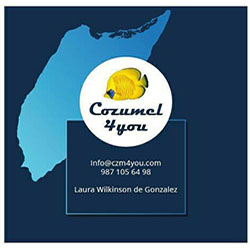

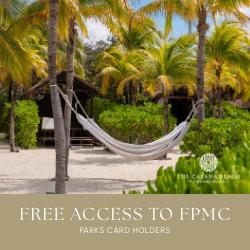

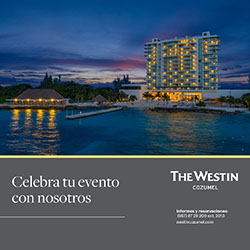
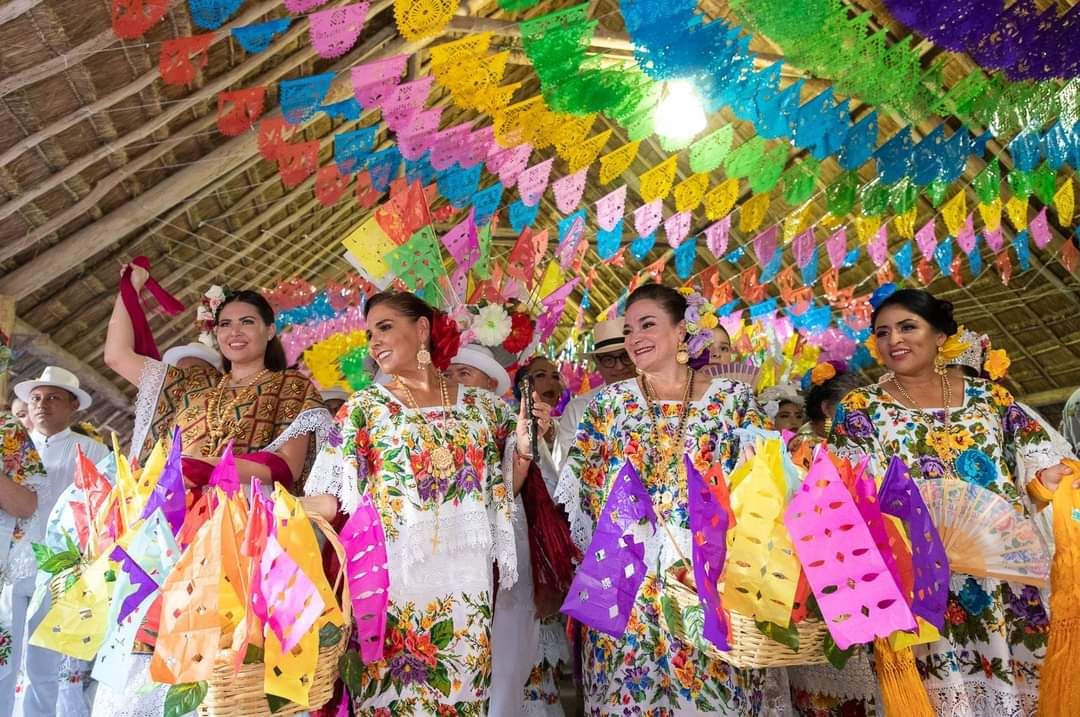
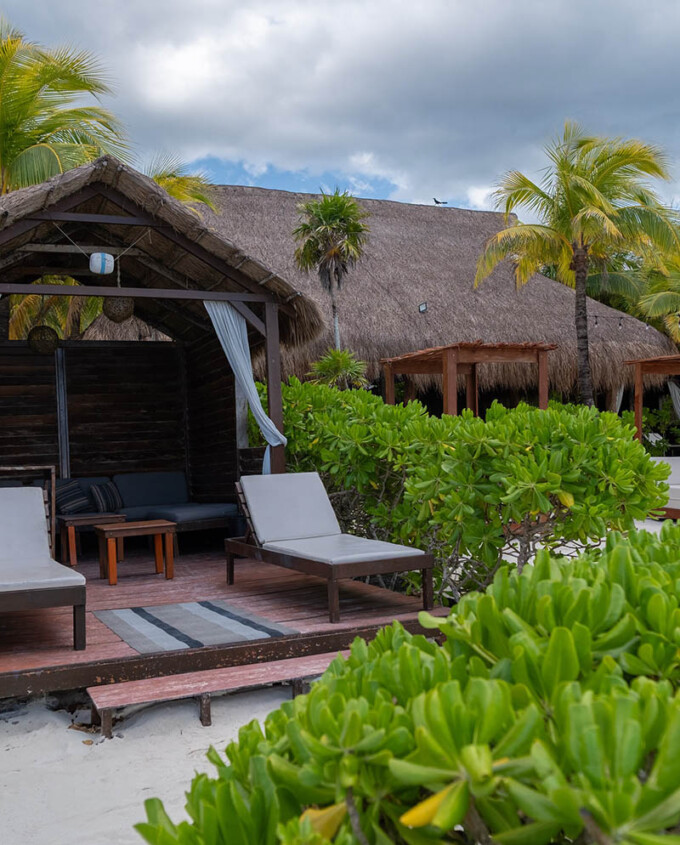
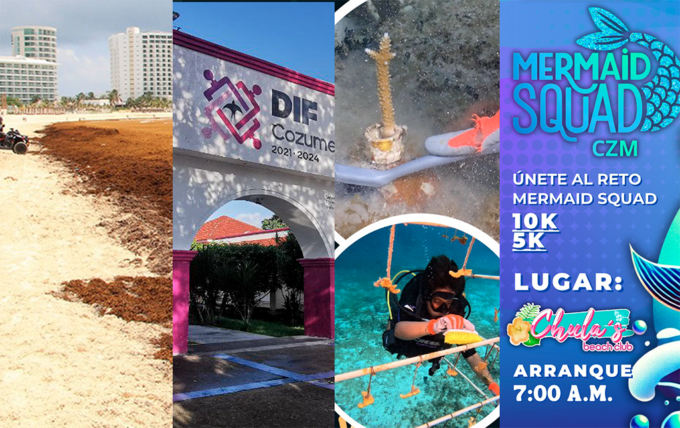




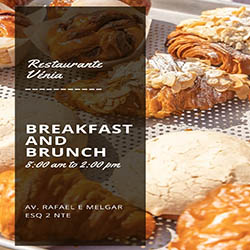


Leave a comment